Warwick Thornton’s THE NEW BOY is out in cinemas in UK and Ireland today. Here are some interviews with Cate Blanchett about the film. Cate is featured on Empire Magazine’s latest issue. You can order a copy here. She is also on today’s episode of Kermode & Mayo’s Take podcast.
There is also new interview during the Toku Saké event.
Cate Blanchett: ‘I’ve always wanted to play a nun’
“I’ve got to come clean,” Cate Blanchett admits with a devilish grin. “I’ve always wanted to play a nun.” After tackling everything from Bob Dylan in I’m Not There to an Elf in The Lord of the Rings, Blanchett’s prayers have finally come true: in Warwick Thornton’s magical-realist drama The New Boy, the 54-year-old Australian actor stars as Sister Eileen, a wine-drinking, Jesus-loving nun who runs a remote monastery in Australia during World War Two. “They’re such mysterious figures, particularly cloistered nuns,” Blanchett observes. “I’m fascinated by the concealment.”
Co-produced by Blanchett’s company Dirty Films, The New Boy unravels as an entrancing clash of beliefs. An aboriginal boy around the age of ten, played by newcomer Aswan Reid, is captured by police on horseback and brought to Sister Eileen’s orphanage to be indoctrinated into Christianity. The unnamed child, though, arrives with his own Indigenous spirituality, as well as magical powers glimpsed through orbs of light generated from his fingertips. Such is the boy’s impact upon Sister Eileen, who has secretly taken over the monastery after a priest’s death, the film could alternatively be titled The New Sister.
“We find Sister Eileen in a crisis of faith,” says Blanchett, speaking over Zoom from her UK home. “She doesn’t want another priest to come in. There’s a sense that the boys haven’t been treated well by that priest, which is a narrative we very much understand historically in the Catholic Church – you know, the abuses that went on there. So how long can she stave off the outside world and protect the children? Yet she herself is quite fragile.”
As a child, Thornton, a 53-year-old Kaytetye filmmaker, was raised at a boarding school run by Spanish monks. There, he encountered Christianity, much like the eponymous new boy does when Sister Eileen introduces him to a wooden statue of Jesus on a cross. In the early 2000s, Thornton even wrote a script, The Father and the Son, inspired by his upbringing, Australia’s colonial past, and the country’s “breed out the Black” policy whereby Aboriginal children were taken from their parents and handed to white families. When a draft was sent to Blanchett during the pandemic, it centred around two male characters.
“If you see a priest and a young, Indigenous boy on a poster, you think, ‘I know what that film is, and I don’t want to see that,’” says Blanchett. “My partner, Andrew Upton, suggested to Warwick that if he flips the gender and makes the priest a nun, suddenly there’s a whole layer of compilation. It became a powerful film about absent fathers, and people trying to establish a matriarchal system.”
Much like Tár, another film in which Cate Blanchett plays a know-it-all white woman challenged by young people of colour, The New Boy possesses a dark sense of humour that doesn’t undermine its serious subject matter. Take, for instance, the speed at which Sister Eileen glugs alcohol, or the audaciousness of a winking Jesus statue. It also marks a sly shift for Thornton, a filmmaker whose acclaimed features – in 2009, Samson and Delilah won the Camera d’Or at Cannes – were known more for their visual poetry than surreal jokes. Much of that, the director claims, comes down to Blanchett.
“It’s scary writing for bonny Cate because she can handle a 20-page monologue, but that’s not the kind of filmmaker I am,” says Thornton on a separate call from LA. “I’d rather watch someone think than speak. If you give bonny Cate less, in a strange way she’ll give you more. We changed it from a priest to a nun, but we kept the physical arc. Even though she’s a nun, she still has to do all the monk shit. That’s rock ‘n’ roll for her. She’s playing a bloke, but she’s playing a nun playing a bloke, which is really bizarre.”
Likewise, Blanchett praises Thornton’s visual framing of Sister Eileen within a patriarchal system, as well as the ongoing question marks around her character. “She’s officiating mass, which is something priests do, not nuns,” says Blanchett. “There’s a sense that all of them have dark secrets. Of course, any country that has been colonised has a Pandora’s chest worth of dark secrets in their culture.” Meanwhile, Sister Eileen’s fretful gesticulations are juxtaposed with a child who stares at her in perplexed silence. “People are always reading meaning into him, which is what happens with religion,” she says. “Things take on spiritual significance because we can’t give voice to the depth our soulful feelings.”
It’s revealed that among the boy’s powers is the ability to mend wounds and even reverse death. The child is, then, likely a Ngangkari healer, albeit a fictionalised version whose gifts embody a more magical form. “In Indigenous culture, there’s a whole connection to time and history I don’t have the right to discuss,” says Blanchett. “He was displaced, and didn’t have the chance to step into that power. The tragedy is the incuriosity the Catholic Church has in relation to that Indigenous spiritual power, which has so much to offer. It doesn’t end up melding in a new way of looking at things.”
Thornton teases that he and Blanchett might work again on a “remake of Faust in modern-day New York”, while the actor’s upcoming films include Jim Jarmusch’s Father Mother Sister Brother (“not that kind of sister,” she interjects) and Guy Maddin’s Rumours (“one of the most joyous experiences I’ve ever had,” she beams). Meanwhile, The New Boy is still slowly making its way into cinemas nearly a year after its Cannes premiere – now 96 minutes long, rather than 116 minutes.
“I was sitting at San Sebastian, going, ‘Oh my God, this film has three endings,’” says Thornton. “It needed to be shorter. It needed to be quicker. I dictate a film on how sore my bum gets in a cinema. Three-hour films are perfectly designed for streaming.” So this isn’t actually his Dune? “Sadly, I’m one of those who will wait for [Dune] to be on VOD. I can’t sit for three hours. It’d drive my fucking mad. I’ll watch it on my iPad.”
Moreover, Blanchett believes that The New Boy, with its elliptical imagery, will be relatable to audiences in the modern age. “You don’t particularly know what time period you’re in, but you sense there’s a war out there,” she says. “People are protecting these children from the outside world. That’s something we’re all thinking about at the moment, and we’re all waiting for a miracle to happen.” She adds, “You don’t have to be Catholic or a nun to want to be saved from your situation.”
Full on Dazed
Cate Blanchett: ‘I’m bewildered by Western religions. True faith is riddled with doubt’
In The New Boy, Cate Blanchett plays Sister Eileen, a good-hearted but increasingly fragile nun who runs a mission in the Australian Outback for Indigenous boys.
“She [is] wanting a miracle to arrive, in the form of the cross and the form of the new boy,” explains Blanchett, whose character becomes reliant on red wine as she begins to question her own faith. “She wants any miracle.”
Sister Eileen, she continues, “is quite spiritually lost. So it makes for an interesting dynamic with the new boy. He’s a child. He doesn’t know what his abilities are or what his destiny is. And so when he gets dropped in, she’s at the point where she’s prepared to be open to it. There’s something that she identifies on an unconscious level with him being something unique.” She stops. “But it could also be that she’s slightly hungover.”
The New Boy probably would not have been made without Blanchett. For years now, she has been quietly but potently using her influence in the film industry. It’s largely thanks to her production company Dirty Films, which she runs with her husband Andrew Upton, and which produced this film. Call it putting something back into a world that’s treated her well.
“It can sometimes be ‘hard yakka’, as they say in Australia, to forge a career in the arts,” she explains. “It can be a bit brutal. So if you have a chance to scaffold and support people’s career development, I find that really rewarding.”
Last year, she and Upton produced Fingernails, the Riz Ahmed and Jessie Buckley curio set in a near-future world where lovers are matched via a bizarre genetic test. Later this year, the Australian-set domestic violence tale Shayda will hit British cinemas, again produced by Blanchett and Upton, and starring Iranian actress Zar Amir Ebrahimi. “It’s not necessarily about finding a story I can be front and centre of,” she says, though in truth it feels a shame whenever she isn’t.
As the first lady of Australian cinema (with apologies to Nicole Kidman), it’s a surprise how few projects Blanchett has made in her homeland. She filmed the Marvel movie Thor: Ragnarok there, as well as Stateless, a TV drama she co-created. But it has been years since she had a starring role in an Aussie movie. Her last was Rowan Woods’ 2005 film Little Fish, in which she played a former heroin addict living in a Sydney suburb, the very same year she won her first Oscar, for playing Katharine Hepburn in The Aviator.
She won her second Oscar in 2014, for playing a neurotic socialite in Woody Allen’s Blue Jasmine, and has worked with such luminous directors as Todd Haynes, David Fincher and Steven Spielberg. Still, you can sense the joy in her voice talking about The New Boy, which took Blanchett – who grew up in Melbourne – back to South Australia, where she shot one of her earliest featurettes, 1996 tale Parklands.
The New Boy is not a film that bulldozes the Catholic Church, an institution that has been rocked by sexual abuse scandals. “Cinema should be balanced,” says Thornton. In fact, he has received positive affirmations from priests in Australia who said they enjoyed the film. But it does present his concerns about organised religion. “I don’t understand organised religion,” he says. “I’m afraid of religion that says, ‘No, no one else is right. We are the only people who are right and they are wrong.’”
Blanchett agrees. “I’m often bewildered by the degree to which most Western religions preach ‘definitive’,” she says. “A definitive way of looking at the world and what may lie beyond. I think faith, true faith, is riddled with doubt.”
While Thornton had been developing The New Boy for 18 years, it was only when Blanchett called him during the pandemic, wanting to know what he was planning next, that the film got off the ground. “We just started talking, different times, day and night,” she says. Thornton mentioned The New Boy, an idea he just couldn’t shake, and Blanchett and her husband were hooked. “We found it really mysterious and knew that there was something really special in there that we didn’t quite understand,” she says.
Then came “the $64 question”, she adds. “Who is the new boy? We don’t have a film without it.” Finding the infectious and charismatic Reid was the film’s true miracle. Such is the way with these things, they found Reid almost immediately. “He was the second child I looked at,” says Thornton, who then typically had to audition a further hundred or so youngsters before returning to the boy. “Which is a little bit silly.”
On set, Thornton was the conductor of organised chaos: eight children (“they were angels!” Blanchett cries) and a menagerie of animals, from sheep to snakes to a Clydesdale horse named Bear. Amid all of this, he had to get over his ingrained fear of working with actors. “A director with an actor phobia is hilarious,” he says with a laugh. “Not very useful.” But he was bowled over by Blanchett. “She’d find stuff every day that I hadn’t thought about,” he says. “You feel that you’re not worthy in a way, but that makes you a better director and empowers you.”
After this experience, Thornton is clearly hoping for a reunion. He has already written his next feature – a higher-budget movie, set during the Second World War, around the Bombing of Darwin that took place in February 1942. “I’ve been thinking about that one for way too long,” he says. “I’ve been thinking about that for more than 18 years.” So could there be a role for Blanchett? “I don’t know,” he says, coyly. “The role is a female lead…I’m being cryptic. I don’t know if she’d want to work with me again!” Of course she would, I suggest, and he grins.
“I’m very random and instinctual about what I end up doing,” says Blanchett. Her instincts have been pretty good so far.
Full on iNews
Remaining parts of The Big Issue interview. Full here. You can buy a copy here for the full feature.
“It’s very, very volatile at the moment,” says Cate Blanchett. We are talking, as you do, about religious and political dogma, colonialism and white supremacy, misogyny and the perilous state of democracy.
This time last year, Blanchett was at the Oscars, where Tár was nominated in six categories. Her latest venture is altogether different. In The New Boy, a film by Warwick Thornton, Blanchett plays a conflicted nun in a story of colonialism and Christianity in 1940s rural Australia.
“Like everybody, we were un-moored during the pandemic,” she says. “And it felt that there was a kind of a radical openness to a lot of those conversations. We went right back to our childhoods. I didn’t realise he’d been educated by monks after being sent away to Catholic boarding school to ‘straighten him out’.”
“So the film came out of a very personal, angry place, I think, for Warwick. When we were filming it, he was wrestling with that young black man’s anger that is totally justifiable and understandable and is still inside him. But he was also wanting to make a film with a great deal of curiosity and tenderness. That wrestle was really complicated for him.”
While Thornton was forced into it, Cate Blanchett grew up fascinated by the Catholic Church. “Not being raised at all religiously, I had such a desire to be part of the Catholic Church. I would go along with my best friend from primary school on Sundays –?and just the smells of it, and the smutty jokes that were said under people’s breath, the profound ritual…” she says.
———-
There are vital elections coming soon, including in the US, where the fundamentalist Christian right is becoming increasingly blurred with white supremacy in Donald Trump’s bid to return to the White House.
Having played one of the architects of the US Christian Right, Phyllis Schlafly, in TV’s Mrs America, what does Blanchett think?
“Politics seems incredibly shameless. And reprehensibly so. Talking about white supremacy, I think there’s also a deep a misogyny that is rampant. It goes hand in hand, which is extremely worrying.”
“The old ways of working and behaving, the so-called mainstream, is such a default setting that we need to constantly remind ourselves of all these massive, vitally important movements that have erupted. Black Lives Matter was so recent –?and we have to remind ourselves why it happened in the first place.”
Faith and facts come into direct conflict in The New Boy. It is such fertile ground. Blanchett sees it these days in discussions around the environment.
“When you walk into a cathedral, even if you’re not religious – or an empty theatre that’s been around for hundreds of years – you can feel the echoes and the resonances of the congregations, whether they be theatrical or spiritual, that had been there before,” she begins.
“There’s a quietude but also a space to sit with unanswerable questions. And there’s a humility in the acceptance that our climate is changing. There’s an opportunity in it. I always thought religion was about asking big questions.”
“But it turns out those people think no, no, no, it’s about finding the answer and sticking to it. Because in the end, it’s not a comfort, it’s a locked door for those people. And it’s too terrifying. So again, it’s that failure of imagination, to realise it does involve a bit of sharing, it will involve a bit of sacrifice. But as we try and teach our children, there’s no gains without sacrifice. And that’s what religion teaches us.”
“But somehow along the way these tomes have been interpreted, like the Originalists in America with the Constitution, which has become a religious document. And once a democracy calcifies, it’s a dead organism. It has to be a living, breathing, inclusive thing through which ideas move as cultures change and evolve. You must feel that every day in terms of what comes through your doors.”
Blanchett knows and buys The Big Issue, and is curious about our history, how we survived lockdown, what was in the first edition.
It’s a curiosity that also fuels her work. Few actors have Blanchett’s range. Who else could find the hidden depths and quiet, queer longing of Carol in Todd Haynes’s masterpiece and also produce the stunning unravelling of Lydia Tár? Who else could hope to play both Elizabeth I and Bob Dylan – two icons, two astonishing transformations.
But this is not the acting career Cate Blanchett imagined.
“I didn’t necessarily imagine ever making anything approximating a moving picture,” Blanchett says. “I was working in the theatre and certainly didn’t see myself as – and wasn’t seen to be –?someone who would have a film career. I was Australian. And I was strange looking. You know, I wasn’t that girl.”
If she found her feet on the stage, Blanchett has soared since transferring the bulk of her work to the screen. Now, as a producer as well as an actor on The New Boy, she is creating the culture she wants to see, asking the big questions.
But she baulks at the idea that her choices of film project are driven by her personal politics. “I’m drawn to things, ideas, moments in time, filmmakers, or stories that I don’t know anything about or that challenge or shift the way that I look at things,” she says, reflecting on a career that has so far won her two Oscars, four Baftas and universal acclaim.
“You feel like if you talk about politics at the moment, people are about to punch one another. But I think there’s a storytelling space that can hold people together if you don’t tell them what to think.”
“I suppose I just wanted to have as many different experiences and live as many different lives as I can.”
She grins broadly. “I want to live all these different lives to stave off the inevitable, which is one’s mortality. But it’s not working very well. I’m still gonna die. I haven’t solved that one…”

The New Boy Reviews
Cate Blanchett — in her first Australian role in several years — plays Sister Eileen, the leader of a Catholic mission in Australia’s Northern Territory. After the supreme, overbearing confidence of her performance in 2022’s Tár, there’s a fascinating nervous energy to Eileen: seemingly as fearful of her faith as she is beholden to it. She is naive and misguided but also quietly cunning, signing letters of official business ‘Don Peter’, after the now-dead patriarch of the mission, and pretends to be him for the benefit of delivery men. Even when the character feels occasionally underwritten, Blanchett is — of course — never less than compelling.
A gentle, odd little Australian fable. Warwick Thornton’s film has a lot of thoughts to process, and while they don’t always cohere, the performances from Blanchett and Reid keep it interesting.
Full review on Empire
The New Boy’s sweeping shots of the golden hues of the barren Outback are a welcome addition to the light and dark symbolism throughout, helping to demonstrate the dichotomy between Indigenous and Western spirituality. Further, the score from Nick Cave and Warren Ellis adds depth to the stripped-back, bare setting.
Sadly, the narrative momentum becomes a little stilted in the second part of the film. Increasingly, you are unable to decipher Sister Eileen —one second she believes the new boy and his powers are a gift from God and the next second, his apparent divinity is ignored and he needs to be assimilated leaving you wondering how her beliefs stack up. Blanchett clearly intends to play a rather idiosyncratic and eccentric nun but if we traded some of that effort for a more cohesively written and portrayed character, then we may have had a tighter second half, seeing as so much is centred around her and Reid.
There is much to love about The New Boy, including its effective use of magical realism which is flourished with tidbits of CGI here and there. Thornton tells a story that speaks to live issues concerning Indigenous Australian rights today. This is certainly a favourable addition to his catalogue as well as Indigenous Australian cinema as a whole.
Full review on Filmhounds
Cate Blanchett lands creative director role at Toku Saké
Premium sake brand Toku Saké has announced Cate Blanchett as its new creative director, 18 months after launching onto the UK market.
Having spent time during her role as global ambassador for Japanese skincare brand SK-II visiting sake breweries in Japan, this move has fulfilled Blanchett’s long-held desire to work with a sake brand, she revealed in a welcome speech to guests (including Wallpaper*) at a celebratory event in London last week, at Japanese restaurant Izakaya at Supermarket of Dreams.
‘We’ve had some great nights, and great friendships, great conversations have been ignited through the sharing of sake,’ she tells us in an interview on the night. Having been introduced to brand founders Anthony Newman and Peter Hudson through a mutual friend, it’s clear that Blanchett is looking forward to working with the people behind Toku Saké. ‘It’s a collaboration. We have a shared love of the long traditions of sake, but also of the trades that surround it. I’ve been obsessed with creating a sake for a very long time.’
Toku, meaning ‘virtue’ in Japanese, is brewed at the Takasago Brewery in Asahikawa, Hokkaido – Japan’s coldest city and prefecture, with temperatures plummeting to -20°C in the coldest months. Currently producing a Junmai Daiginjo sake (the highest grade of the sake), it uses highly polished (35 per cent) Yamada Nishiki rice, which is fermented in the region’s freezing conditions. Blanchett recalls her first experience of Toku: ‘It has such a beautiful fruity invitation, but then it finishes in a very clean way. It’s really surprising.’
Sake has suffered from misunderstanding among consumers outside of Japan, but the brains behind Toku are hoping their brand will help to re-educate consumers on the many ways in which this versatile product can be enjoyed. And Blanchett’s investment (personally and financially) will no doubt help them do just that.
When it comes to how she will approach her new role, Blanchett wants to pay homage to the traditions at sake’s roots while also evolving the experience of the consumer. ‘We’re really interested to evolve what the experience is before you even try the liquid… inviting the consumer, the diner, the drinker to sort of look at the category slightly differently.’
One way in which that can happen is in making the brand stand apart on a shelf. Blanchett feels that Toku Saké is already in a good position: ‘I love the way it’s already beginning to evolve. It’s very curated, it’s very confident and calm and quiet.’
The bottle incorporates both Japanese and English languages, a relative rarity in the category. ‘What I love about our bottle is [that it] pays absolute due respect to the heritage and the origin of the Hokkaido region, but you flip it and [it] says we’re also here in English-speaking countries.’
Blanchett champions how sommeliers can introduce consumers to Toku – and the sake category as a whole. ‘I think it opens up your experience of food. It’s got this complexity that is able to bring out flavours that hitherto perhaps haven’t been brought out by wine. I think that’s part of the excitement.’
While the export market for sake looks strong, production has been dwindling since a peak in the 1970s, and local interest in the category is waning. How does Blanchett hope Toku Saké can help bring the category back to health? ‘Part of what drew us to the category in the first place is love, respect and reverence for the traditions and the processes. But sometimes, when there’s a product that your country is well known for [and] a culture outside takes a fresh look at it, you see it afresh.’
Source: Wallpaper
 Welcome to Cate Blanchett Fan, your prime resource for all things Cate Blanchett. Here you'll find all the latest news, pictures and information. You may know the Academy Award Winner from movies such as Elizabeth, Blue Jasmine, Carol, The Aviator, Lord of The Rings, Thor: Ragnarok, among many others. We hope you enjoy your stay and have fun!
Welcome to Cate Blanchett Fan, your prime resource for all things Cate Blanchett. Here you'll find all the latest news, pictures and information. You may know the Academy Award Winner from movies such as Elizabeth, Blue Jasmine, Carol, The Aviator, Lord of The Rings, Thor: Ragnarok, among many others. We hope you enjoy your stay and have fun! 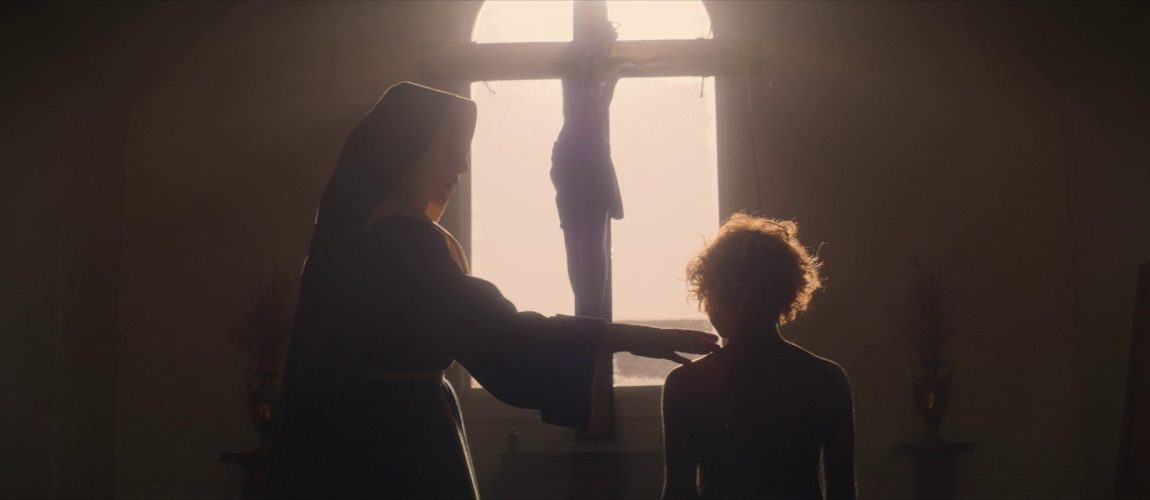
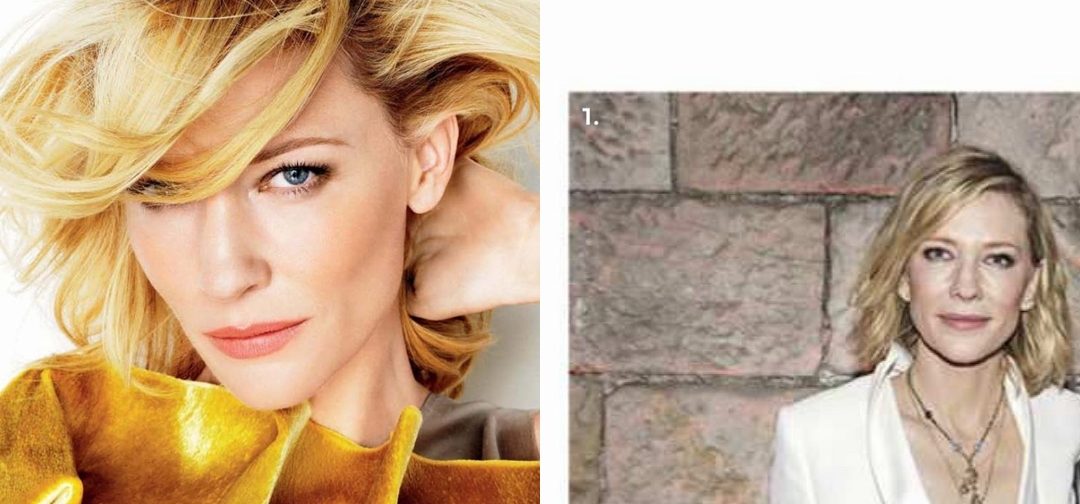
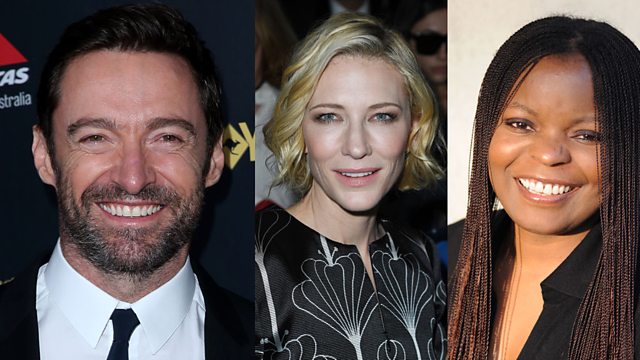
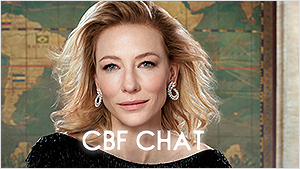
 Black Bag (202?)
Black Bag (202?) Father Mother Brother Sister (2024)
Father Mother Brother Sister (2024) Disclaimer (2024)
Disclaimer (2024)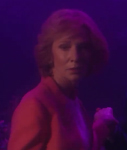 Rumours (2024)
Rumours (2024)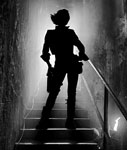 Borderlands (2024)
Borderlands (2024)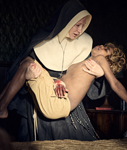 The New Boy (2023)
The New Boy (2023) TÁR (2022)
TÁR (2022)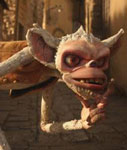 Guillermo Del Toro’s Pinocchio (2022)
Guillermo Del Toro’s Pinocchio (2022)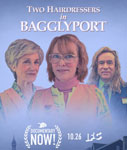 Documentary Now!: Two Hairdressers in Bagglyport (2022)
Documentary Now!: Two Hairdressers in Bagglyport (2022)












